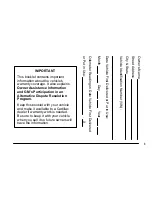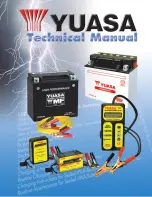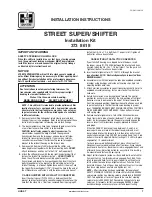
WARNING!
•
Driving through standing water limits your vehi-
cle’s traction capabilities. Do not exceed 5 mph
(8 km/h) when driving through standing water.
•
Driving through standing water limits your vehi-
cle’s braking capabilities, which increases stopping
distances. Therefore, after driving through stand-
ing water, drive slowly and lightly press on the
brake pedal several times to dry the brakes.
•
Failure to follow these warnings may result in
injuries that are serious or fatal to you, your pas-
sengers, and others around you.
CAUTION!
•
Always check the depth of the standing water
before driving through it. Never drive through
(Continued)
CAUTION!
(Continued)
standing water that is deeper than the bottom of
the tire rims mounted on the vehicle.
•
Determine the condition of the road or the path
that is under water and if there are any obstacles in
the way before driving through the standing water.
•
Do not exceed 5 mph (8 km/h) when driving
through standing water. This will minimize wave
effects.
•
Driving through standing water may cause damage
to your vehicle’s drivetrain components. Always
inspect your vehicle’s fluids (i.e., engine oil, trans-
mission, axle, etc.) for signs of contamination (i.e.,
fluid that is milky or foamy in appearance) after
driving through standing water. Do not continue to
(Continued)
5
STARTING AND OPERATING
237
Summary of Contents for Promaster City 2016
Page 4: ......
Page 7: ...1 INTRODUCTION 5 ...
Page 10: ......
Page 94: ......
Page 151: ...INSTRUMENT CLUSTER EVIC Instrument Cluster 4 UNDERSTANDING YOUR INSTRUMENT PANEL 149 ...
Page 264: ...262 STARTING AND OPERATING ...
Page 308: ......
Page 346: ......
Page 388: ...Fuse Panel Cavity Locations 386 MAINTAINING YOUR VEHICLE ...
Page 400: ......
Page 401: ...MAINTENANCE SCHEDULES CONTENTS 䡵 MAINTENANCE SCHEDULE 400 Maintenance Chart 402 8 ...
Page 418: ......
Page 419: ...INDEX 10 ...
















































